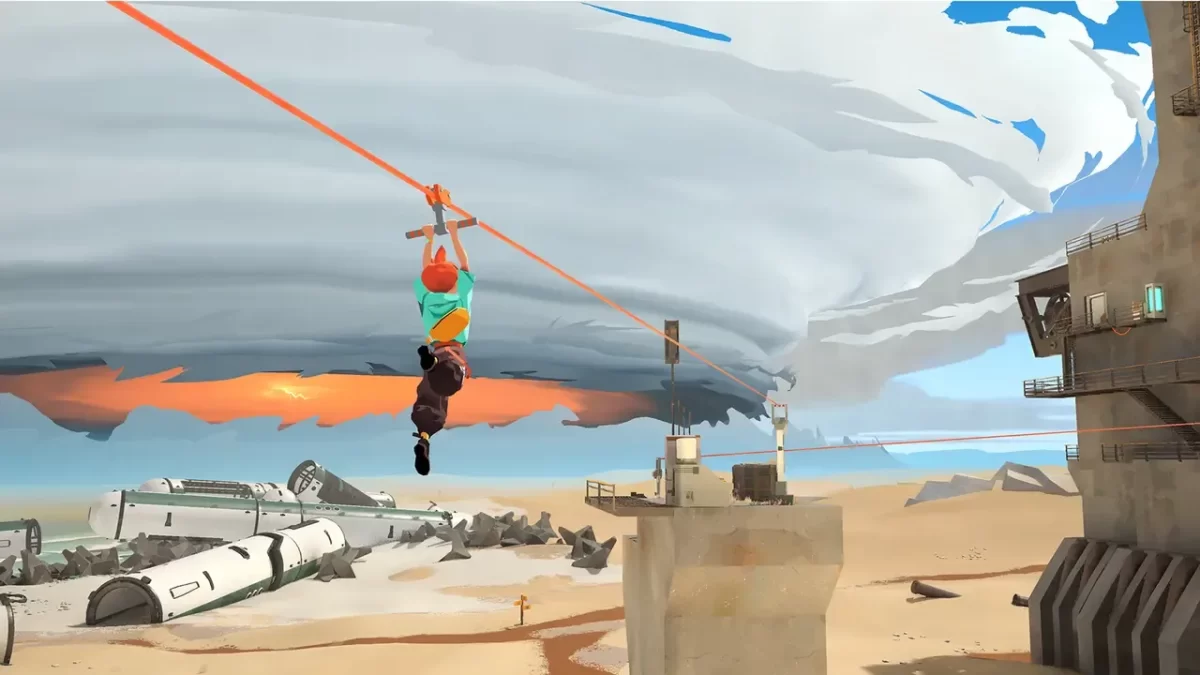Caravan SandWitch is a new open-world exploration game in the style of titles like Sable and Jusant (the latter being more of an aesthetic similarity than a mechanical one) from French developer Studio Plane Toast. This looks like it’s their first game, and it’s pretty captivating. I’ve only cracked the surface (played through the second chapter and associated side quests) and there’s a pretty startling amount of meat on its bones. What it isn’t, to me, is “wholesome.”
The initial conceit of Caravan SandWitch is that you are Sauge, a teenage astronaut-in-training with a shady galactic exploration organization called the Consortium, and you have to return to your home world of Cigalo to investigate a distress signal sent out by your long-lost sister, Garance. When you arrive on Cigalo, you are met with an idyllic beachside settlement that nevertheless seems to be packed with problems to solve. Helping residents of Estello Village, or wandering nomads, or the froglike people indigenous to the planet, results in a kind of tradeoff: you get more materials, equipment and expertise in navigating the planet, but more days pass between now and when you received the distress call. If there was any urgency in getting here, it’s basically sapped out by the time you reach chapter 3 and eight days have passed.
There are mysteries to contend with on the planet, like what the deal is with the giant, constantly-churning mesocyclone that seemingly takes up much of the southern portion of the map, and who the hooded, masked figure is that keeps appearing (though I fear I’d just be spoiling things if I speculated) in random places. There’s also the question of why signal jammers have been placed all over the map, and whether or not our dismantling of these jammers is actually a good idea.
All of this is to say, there’s some compelling stuff in this game, even if I find the localization to be a little weird. What I find much weirder is the way this game is classified as “wholesome.” I was first made aware of Caravan SandWitch via the Wholesome Direct back in June, where its trailer was sandwiched (sorry) between a match-3 puzzle game based on Greek mythology (Mythmatched) and a bookvan management game called Tiny Bookshop.
And like, no shade to either Caravan SandWitch or the two games it sat between in the Wholesome Direct, but I don’t know that the vibes are exactly symmetrical here, you know? It’s a game about tracking down your possibly-dead sister on a hostile alien world made worse by a massive corporate-state entity vs. a game where you hang out on the beach and sell books to people out of a trailer. I guess this leads me to ask, what exactly defines “wholesome” as an, I don’t know, internet or game dev brand? What expectations for “wholesomeness” should I as a person who plays these games have? Is it a color palette? A narrative device? A design ethos? What separates a game like, say, Saltsea Chronicles from this game or from something like Minami Lane?
Anyway, this is what I’m thinking about as I put time into Caravan SandWitch today. Maybe it’ll all become clearer when I beat the game.






One thought on “Caravan SandWitch: Stretching the boundaries of “wholesomeness””
Comments are closed.